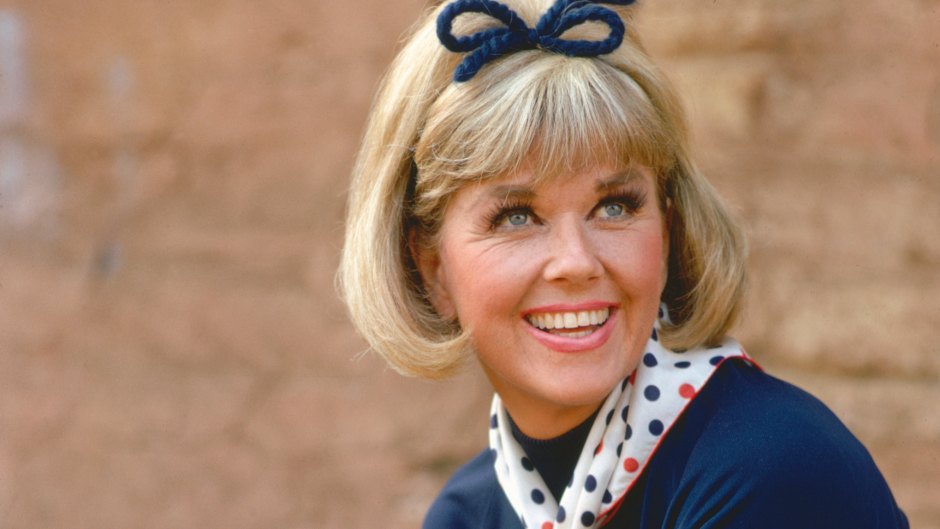
Silver Screen Collection/Getty Images
Remembering Doris Day — Her Films, Her Music, Her Legacy and Her Life: ‘She Couldn’t Help But Be a Star’
When you think of Doris Day, it’s difficult not to think about all of those wonderful romantic comedies she made in the 1950s and ’60s with the likes of Rock Hudson, Cary Grant, James Garner and Rod Taylor. One of the fascinating things in the aftermaths of the Hollywood icon’s death at age 97 — something that many may have somehow forgotten — is just how extensive her career as a recording artist was as well.
Biographer Tom Santopietro, author of Considering Doris Day, points out that anyone who didn’t realize that certainly isn’t alone. “Doris Day literally became the biggest star in the world and that overshadowed an extraordinary recording career,” he says. “I mean, it was over 600 songs and she was publicly praised as a singer by Paul McCartney, Sarah Vaughan and Tony Bennett, among other people. That says a lot about what a great singer she was, too. It’s extraordinary. What I talk about in my book is that she made these concept albums for Columbia. Each one had a theme. One was Broadway show tunes, one is called Day by Night and it just consists of songs about nighttime. You listen to those and you realize that she had the most intimate singing voice imaginable. It’s like you felt she was singing out to you, never to a theater full of people. That was her genius as a singer.”

Singing, like acting, was not something Doris had actually planned for yet, ironically she, as Tom puts it, “fell into” both and achieved so much. “She didn’t even want to audition for Hollywood,” he laughs. “Her screen test was being directed by Michael Curtiz, the director of Casablanca, so you’ve got the biggest director in Hollywood and all she did was cry during the screen test. When he said to her, ‘Don’t you want to be a movie star?’ all she said was, ‘I want to go back to Cincinnati.’ Which is hilarious, because her marriage was breaking up and she wanted to see her little boy. But when he put her tests on film, instantly he saw the star quality. You either have it or you don’t. She did. Instinctively.
“She was never wildly ambitious,” he adds, “but the interesting thing is she became the biggest star in the world. I wrote a book about Barbra Streisand, and Barbra Streisand was ambitious from the day she was born. But Doris just took whatever came along and her talent was so huge that she couldn’t help but be a star, though it should be pointed out that she remained so unbelievably modest about it. She’s on film saying — and it’s hilarious — ‘All I ever wanted to do was get married and have children, and I ended up in Hollywood. If I can do it, anybody can do it.'”
For much more on the life and career of Doris Day, please scroll down.
Be sure to check out and subscribe to our Classic TV & Film Podcast for interviews with your favorite stars!

Hulton Archive/Getty Images

Metronome/Getty Images

Michael Ochs Archives/Getty Images

Silver Screen Collection/Getty Images

Richard C. Miller/Donaldson Collection/Getty Images

Jim Smeal/WireImage

Silver Screen Collection/Getty Images

Hulton Archive/Getty Images

Getty Images

Hulton Archive/Getty Images

Warner Brothers/Getty Images

Getty Images

George Rinhart/Corbis via Getty Images

Warner Brothers/Getty Images

Silver Screen Collection/Getty Images

Warner Brothers/Getty Images

Silver Screen Collection/Getty Images

Warner Brothers/Getty Images

Universal History Archive/UIG via Getty Images

GAB Archive/Redferns

Warner Brothers/Getty Images

Silver Screen Collection/Getty Images

Mondadori Portfolio by Getty Images

Movie Poster Image Art/Getty Images

Metro-Goldwyn-Mayer/Getty Images

Richard C. Miller/Donaldson Collection/Getty Images

ullstein bild/ullstein bild via Getty Images

Mondadori Portfolio by Getty Images

Columbia Pictures/Getty Images

Silver Screen Collection/Getty Images

Getty Images

Universal Pictures/Getty Images

Universal/Getty Images

Universal Pictures/Sunset Boulevard/Corbis via Getty Images

Donaldson Collection/Getty Images

Universal/Getty Images

Twentieth Century Fox/Getty Images

Universal/Getty Images

20th Century-Fox/Getty Images

MGM

Mondadori Portfolio via Getty Images

Silver Screen Collection/Getty Images

Metro-Goldwyn-Mayer/Getty Images

Cinema Center Films/Getty Images

CBS/Authenticated News/Getty Images

Paul Harris/Getty Images








































